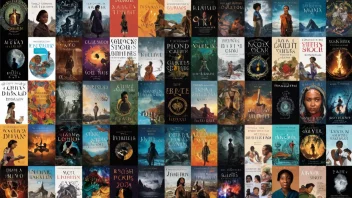Travel writing has long been a captivating genre that allows readers to escape their realities and explore distant lands through the eyes of the author. As society evolves, so too does the nature and style of travel writing. This article compares two significant eras of travel writing: the early exploration narratives of the 19th century and the contemporary personal narrative travel essays. Both styles have their unique charm and purpose, offering different insights into the world of travel. We will delve into the pros and cons of each style and explore how they reflect the cultural contexts in which they were written.
Early Exploration Narratives
Early travel writing, particularly from the 19th century, often focused on exploration and discovery. These narratives were typically written by explorers, adventurers, and missionaries who traveled to uncharted territories. Authors like Mark Twain, Charles Dickens, and Isabella Bird documented their journeys through unfamiliar landscapes, providing readers with a sense of awe and wonder.
Pros
- Historical Context: These narratives serve as historical documents that provide insights into the cultural, social, and political landscapes of the time. They help readers understand the mindset of explorers and their motivations.
- Adventure and Discovery: The thrill of exploration is a central theme in these texts. Readers are taken on exhilarating journeys through wild terrains and exotic cultures.
- Descriptive Language: The rich, often poetic descriptions in early travel writing create vivid images that transport readers to far-off places.
Cons
- Eurocentrism: Many early travel narratives reflect a Eurocentric perspective, often portraying non-Western cultures as primitive or inferior.
- Romanticization: The glorification of adventure can sometimes overshadow the real experiences of the locals, leading to a one-sided narrative.
- Inaccuracies: Some accounts may exaggerate experiences or present fabricated details to entertain readers.
Contemporary Personal Narrative Travel Essays
In contrast, contemporary travel writing often emphasizes personal experience and self-reflection. Authors like Pico Iyer, Paul Theroux, and Bill Bryson focus on their inner journeys and how travel impacts their lives and perspectives. These narratives often blend genres, incorporating elements of memoir, philosophy, and cultural critique.
Pros
- Authenticity: Personal narratives tend to offer a more genuine portrayal of experiences, allowing readers to connect with the author on a personal level.
- Diverse Perspectives: Contemporary travel writing often includes voices from various backgrounds, providing a more balanced view of cultures and places.
- Reflection and Growth: These essays frequently explore themes of personal growth and transformation, resonating with readers on a deeper emotional level.
Cons
- Subjectivity: The focus on personal experience can lead to subjective interpretations of places and cultures, which may not represent the broader reality.
- Lack of Adventure: Some readers may find contemporary narratives less thrilling due to the absence of grand adventures and explorations.
- Overemphasis on Self: There can be a tendency for the narrative to become overly self-indulgent, detracting from the essence of travel itself.
Comparison of Themes and Styles
When comparing the two styles of travel writing, several key themes and styles emerge that highlight their differences and similarities.
Adventure vs. Introspection
Early exploration narratives often prioritize the adventure aspect of travel, focusing on the thrill of discovery and encounters with the unknown. In contrast, contemporary personal essays lean towards introspection, emphasizing what the experience means to the traveler and how it changes them.
Descriptive Imagery vs. Emotional Connection
While both styles utilize descriptive language, early travel writing often relies on elaborate imagery to create a sense of place, whereas contemporary essays focus more on evoking emotional responses and personal connections to the locations visited.
Historical Significance vs. Current Relevance
Early narratives provide a snapshot of historical contexts and societal attitudes of their times, while modern travel writing often addresses current issues such as globalization, cultural appropriation, and environmental concerns.
Conclusion
In summary, both early exploration narratives and contemporary personal narrative travel essays hold significant value in the realm of travel writing. While the former captivates with tales of adventure and exploration, the latter resonates with readers through authenticity and personal reflection. Ultimately, the choice between the two depends on the reader's preferences: those seeking thrilling accounts of exploration might gravitate towards early narratives, while those looking for deeper emotional connections and modern perspectives may prefer contemporary essays. Both styles contribute to our understanding of the world and the human experience, fostering a love for travel and literature alike.






